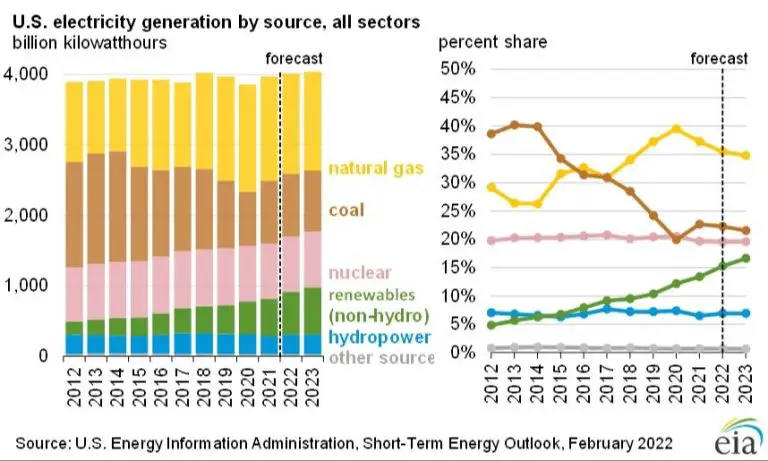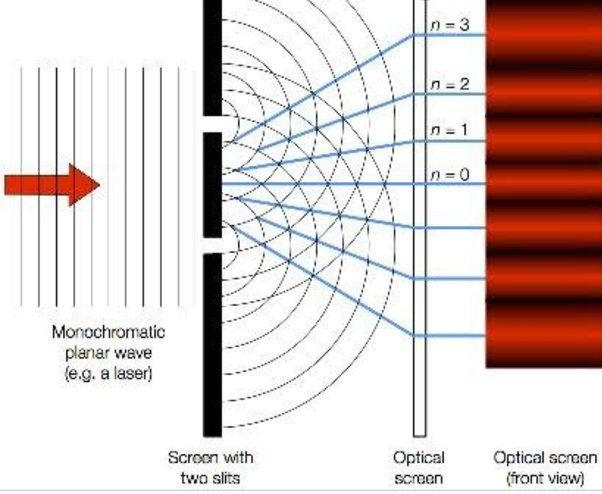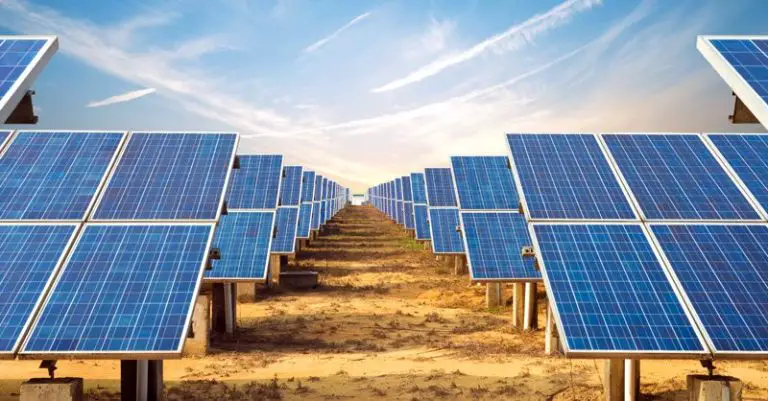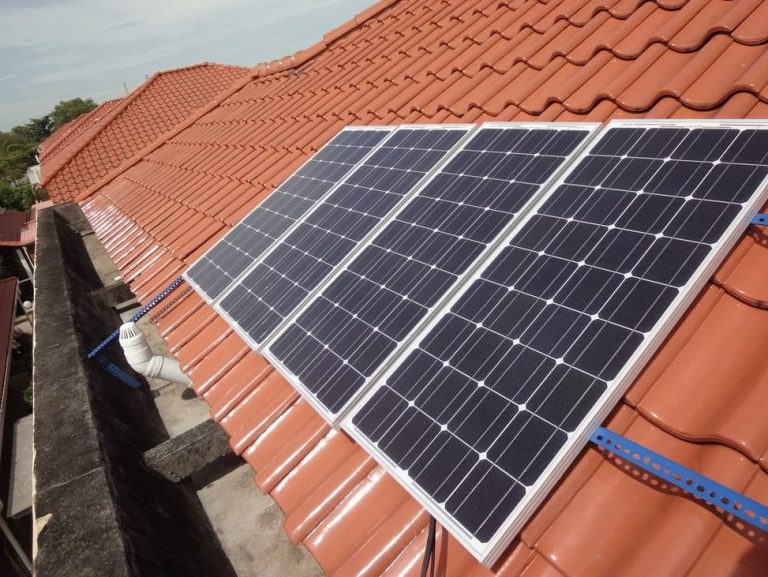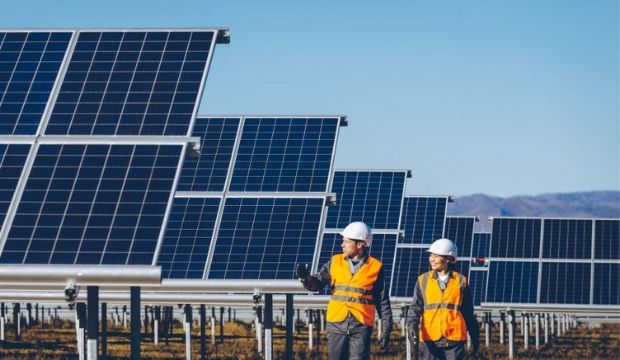What Do Solar Cells Produce Energy From?
Solar cells, also called photovoltaic cells, are electronic devices that convert sunlight directly into electricity using the photovoltaic effect. They are a key technology in generating renewable energy from sunlight. When sunlight shines on a solar cell, the energy from the photons in the sunlight is transferred to electrons in the solar cell, causing them to flow and produce usable electricity.
Solar cells represent a clean, renewable source of energy that doesn’t require fossil fuels. Widespread adoption of this technology has the potential to reduce greenhouse gas emissions and reliance on non-renewable energy sources.
Sunlight
Sunlight is the source of energy that powers solar cells. Solar cells, also called photovoltaic (PV) cells, convert sunlight directly into electricity. This conversion process does not involve any mechanical/moving parts and does not generate greenhouse gases or pollutants. Solar cells utilize a fascinating quantum mechanical phenomenon called the photovoltaic effect to generate an electric current from sunlight photons.
Photovoltaic Effect
The photovoltaic effect is the process by which solar cells convert light energy from photons into electricity. When photons from sunlight strike a solar cell, they interact with the semiconductor material and excite electrons into a higher state of energy, creating electron-hole pairs. The built-in electric fields of the solar cell’s pn junction then separate the electron-hole pairs before they can recombine. This separation causes electrons to flow in one direction and holes to flow in the opposite direction, resulting in a DC electric current.
The photovoltaic effect occurs in solar cells made from semiconductors such as silicon, which have a band gap energy that matches well with the energy levels of photons in sunlight. Photons with energy greater than the band gap are absorbed and contribute to the solar cell’s output, while photons with less energy are not absorbed and pass through the material.
Overall, it is the photovoltaic effect that allows solar cells to directly convert sunlight into electricity through a clean and renewable process. Understanding the physics of this process has enabled researchers to improve solar cell materials and designs for greater efficiency.
Sources:
https://energyeducation.ca/encyclopedia/Photovoltaic_effect
https://www.sciencedirect.com/topics/engineering/photovoltaic-effect
Semiconductors
Solar cells are made out of semiconducting materials like silicon. Semiconductors have properties between metals and insulators—their electrons can move somewhat freely. Silicon atoms form covalent bonds allowing electrons to move to neighboring atoms (“Solar Photovoltaic Cell Basics”).
When light interacts with these semiconducting materials, the photons can excite electrons up to a higher energy level, enabling them to act as charge carriers for an electric current. This interaction between photons and electrons to produce electricity is called the photovoltaic effect (“The Use of Semiconductors in Solar Energy Technology”).
Solar cells made of crystalline silicon make up over 90% of solar panels on the market today. Other semiconducting materials like gallium arsenide and cadmium telluride are also used (“How a Solar Cell Works”)
.
pn Junction
The heart of a solar cell is the semiconductor material which displays the photovoltaic effect. This means when light shines on the material, electrons are knocked loose from the atoms in the semiconductor, allowing them to flow freely (How Photovoltaic Cells Generate Electricity). Within the semiconductor there is a p-n junction, which is formed by doping the semiconductor material to create excess positive charge carriers (p-type) and negative charge carriers (n-type). At the junction between the p-type and n-type regions, the free electrons in the n-type fill holes in the p-type, creating an electric field (How a Solar Cell Works). When light hits the solar cell, electrons are knocked loose in both the p-type and n-type sides. The electric field at the junction causes these free electrons to flow from the n-type side to the p-type side, generating a flow of electricity.
Electric Field
A key component of how solar cells work is the electric field created across the p-n junction. According to HowStuffWorks, when sunlight hits the solar cell, it knocks electrons loose in both the p-type and n-type silicon. The electric field is created by the imbalance of positive and negative charges between the p-type layer (excess holes) and the n-type layer (excess electrons). This electric field causes the electrons to flow from the n-type side to the p-type side, generating an electrical current.
As explained by PBS NOVA, the electric field “pushes electrons that do reach the junction towards the top silicon layer.” Without this electric field forcing the current to flow in one direction, the electrons would not create usable electricity. So in summary, the electric field within a solar cell is crucial for causing the motion of electrons and generating usable electrical current from sunlight.
DC Current
Solar cells produce direct current (DC) electricity directly from sunlight. This is because solar cells essentially act as large photodiodes, which generate an electric current when exposed to light1. The DC current generated by solar cells depends on how much light energy strikes the cell. More intense sunlight results in a greater flow of electrons and higher DC output2.
Since solar panels produce DC power, connecting solar panels directly to DC devices or batteries is straightforward. However, most household appliances run on AC power. This requires an inverter to convert the DC current from the solar panels into AC current that can be used.
Inverters
The electricity generated by solar panels is direct current (DC) electricity. However, most of the electrical devices and appliances we use require alternating current (AC) electricity. That’s why inverters are a crucial component of solar energy systems.
Inverters convert the DC electricity from the solar panels into AC electricity that can power lights, appliances, and equipment. Without inverters, the DC electricity produced could not be used in most homes and businesses that are wired for AC electricity.
Inverters connect to the output side of solar panels and convert the solar DC power into 120-volt and 240-volt AC power. They sync the frequency and voltage to match the AC electricity from the utility grid. High-quality inverters are important for getting the greatest efficiency from a solar array.
There are string inverters, microinverters, and power optimizers. String inverters are connected to multiple solar panels. Microinverters convert the DC output of each panel. Power optimizers sit between each panel and the inverter for maximum energy harvest.
Solar Advantages
Solar energy has many advantages that make it an appealing renewable energy source. First and foremost, solar energy is renewable. The sun will continue shining for billions of years, providing an endless supply of energy (Energy.gov). Unlike fossil fuels which are finite, solar energy can help meet our energy needs today and well into the future.
Utilizing solar also greatly reduces carbon emissions. According to the EPA, solar energy production emits 95% less carbon dioxide per kilowatt hour compared to an average coal power plant (Enel Green Power). Widespread adoption of solar energy can help combat climate change by displacing fossil fuel electricity generation and reducing greenhouse gas emissions.
Conclusion
In summary, solar cells produce electricity from sunlight through the photovoltaic effect. Sunlight is absorbed by semiconductor materials, creating an electric field across the pn junction that generates a flow of electrons. This direct current electricity can then be converted to alternating current and fed into the grid or used to power devices directly. Solar energy has emerged as a promising renewable energy source with many advantages. It is abundant, inexhaustible, and emissions-free. Solar technology has improved dramatically in efficiency and cost-effectiveness in recent decades. The future is bright for solar, with projections that it will supply over 20% of global electricity by 2050. With further innovations in materials, efficiency, storage, and policies supportive of renewables, solar can become a mainstream energy source capable of powering homes, businesses, and grids sustainably.
The future is promising for solar energy. Costs continue to fall each year, and solar is now cost competitive with fossil fuels in many regions. With supportive policies and deployment, costs are projected to decrease further. New technologies like perovskite solar cells and organic PV promise continued efficiency gains. Utilities are deploying large solar farms, and rooftop solar adoption is rising, aided by storage solutions that enable self-consumption. While challenges like intermittency remain, smart inverters, grid integration solutions, and storage options are mitigating these. With solar energy’s immense potential and environmental benefits, investment into R&D and infrastructure is critical to unlocking its full promise as a pillar of the global clean energy transition.

